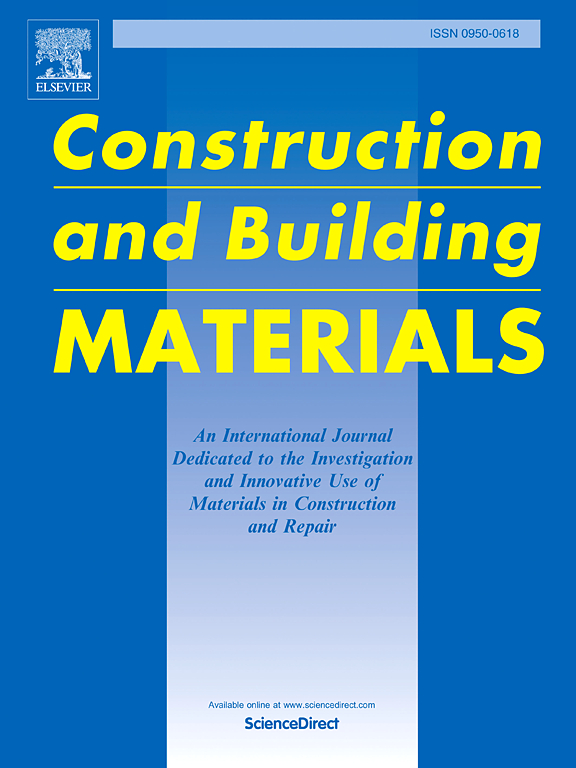Dynamic response and damage constitutive model of freeze-thawed sandstone with or without filling materials in prefabricated flaws
IF 7.4
1区 工程技术
Q1 CONSTRUCTION & BUILDING TECHNOLOGY
引用次数: 0
Abstract
In cold regions, flawed rocks are inevitably affected by freeze-thaw (FT) weathering and dynamic impact, and grouting or filling has become an effective means to improve their stability. In order to clarify the mechanical properties of flawed rocks with or without filling materials under dynamic loading, a series of FT cycle tests and impact tests were conducted on sandstone. The results indicate that the number of FT cycles significantly deteriorates the dynamic peak strength, apparent stiffness, and energy parameters, which are strongly correlated with the flaw inclination angle. In addition, the mechanical properties and energy absorption capacity of the filled specimens were significantly improved, but were affected by the number of FT cycles and flaw inclination angle. The strength and energy enhancement coefficients of all specimens are between 0.01 and 0.31 and 0.06–0.61, respectively. Based on the test results, a coupled damage model of the flawed rock under the combined action of FT cycles and impact loads is proposed, and then a dynamic damage constitutive model is established and verified accordingly, effectively characterizing the dynamic mechanical response of rocks with different FT cycles, flaw inclination angles, and filling states. Based on the principles of stress wave propagation and fracture mechanics, the filling reinforcement effect of rocks was explored. The filling material reduces the reflection of stress waves at the crack interface, enhances the propagation of stress waves, and thus reduces the adverse effects of impact loads on rocks. In addition, the filling material improves the uniformity of stress distribution at the crack tip, increases the stress intensity factor, and significantly enhances the bearing capacity of the rock. The filling effect depends on the matching of mechanical properties between the material and the rock. Therefore, when selecting filling materials, it is necessary to consider whether their FT degradation laws correspond to the rocks that need to be reinforced. The results contribute to clarifying the dynamic mechanical properties of flawed rocks in cold regions, providing guidance for the selection of filling materials and the reinforcement of fractured rock masses.
求助全文
约1分钟内获得全文
求助全文
来源期刊

Construction and Building Materials
工程技术-材料科学:综合
CiteScore
13.80
自引率
21.60%
发文量
3632
审稿时长
82 days
期刊介绍:
Construction and Building Materials offers an international platform for sharing innovative and original research and development in the realm of construction and building materials, along with their practical applications in new projects and repair practices. The journal publishes a diverse array of pioneering research and application papers, detailing laboratory investigations and, to a limited extent, numerical analyses or reports on full-scale projects. Multi-part papers are discouraged.
Additionally, Construction and Building Materials features comprehensive case studies and insightful review articles that contribute to new insights in the field. Our focus is on papers related to construction materials, excluding those on structural engineering, geotechnics, and unbound highway layers. Covered materials and technologies encompass cement, concrete reinforcement, bricks and mortars, additives, corrosion technology, ceramics, timber, steel, polymers, glass fibers, recycled materials, bamboo, rammed earth, non-conventional building materials, bituminous materials, and applications in railway materials.
 求助内容:
求助内容: 应助结果提醒方式:
应助结果提醒方式:


